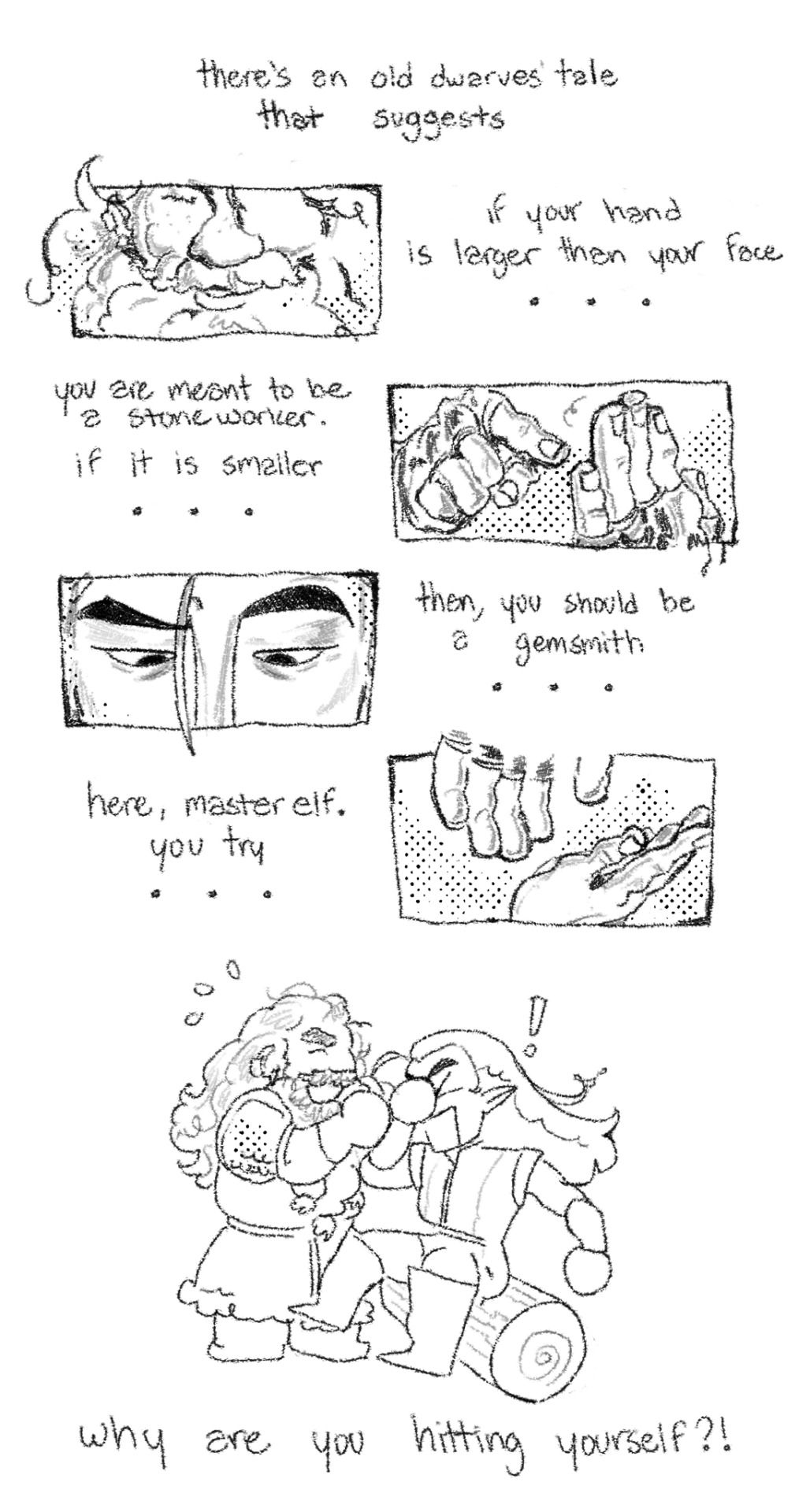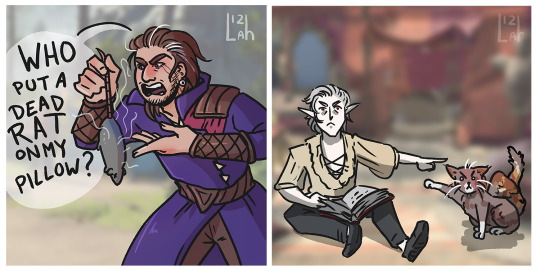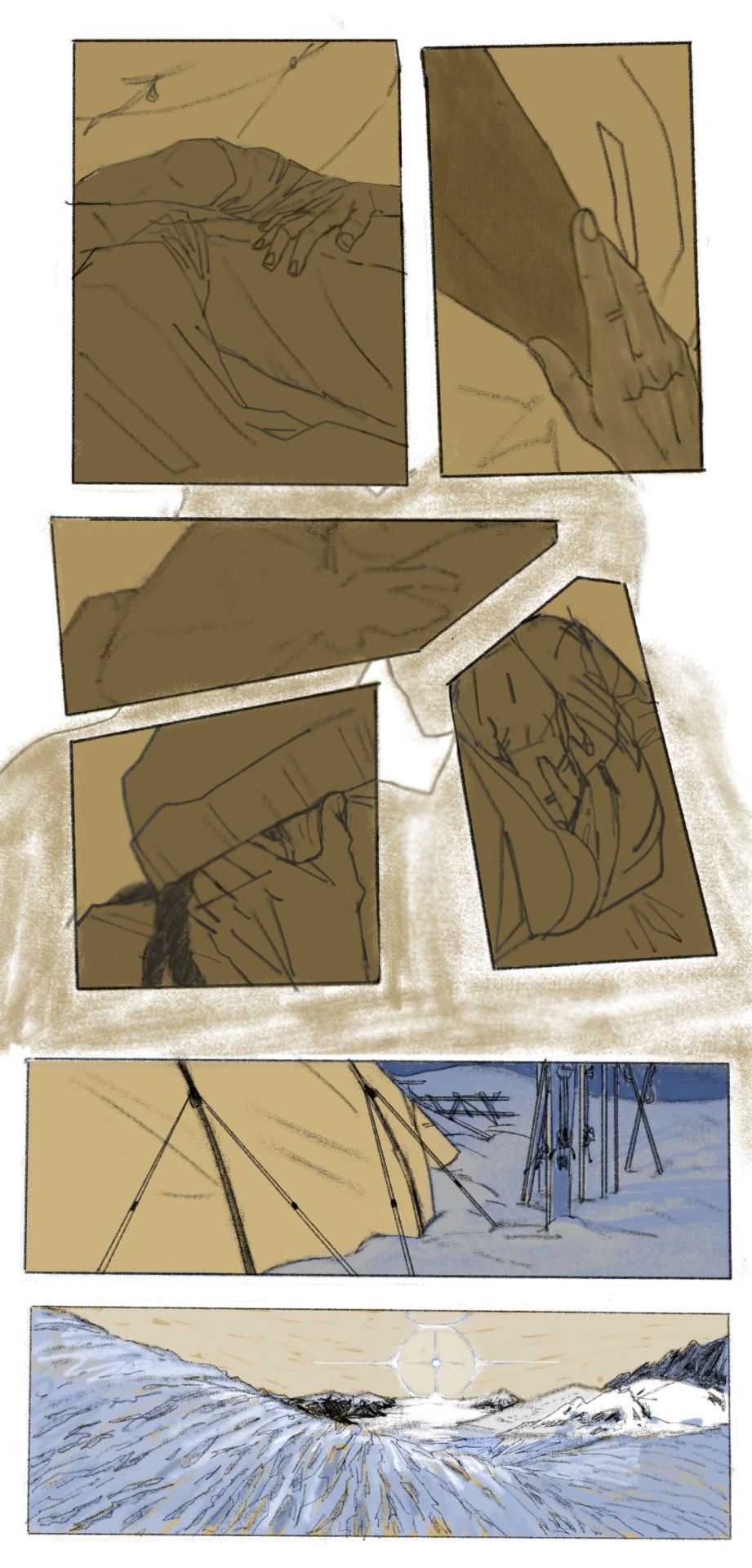Text
115K notes
·
View notes
Text



"Vampires" by Takato Yamamoto.
7K notes
·
View notes
Text

fell for the oldest trick in the book 🤦♂️
long time no post! i’m currently in the middle of my annual lotr rewatch and i can just never resist these two <3
11K notes
·
View notes
Text
Rings my fucking bell, like a perennial fucking plague maiden:
Center harm, not disgust!
When in doubt (and when not in doubt, just swept by problems bigger than you and assured by someone that they know the answer, so don't think right now, just Do!), center harm.
Focus on what specific harm you're reducing with your actions. Make sure it's tangible and concrete. If your actions are minimizing hypothetical harm at the cost of real, tangible harm on others, 9 out 10 times you're on the wrong fucking side, being weaponized by propaganda.
If a conversation revolves around disgust as a driver for action, you're being radicalized. If a call to action depends on your emotional response, you're being manipulated. I'm sorry, this isn't the 90s anymore, social media has eroded the web of respectability of the pre internet society. The primary axis for misinformation to spread in this day and age is emotional response: half the things you believe are true and share as such are not based on fact, expert opinion or personal research. Social media has conditioned us (all of us! You and me and most dangerously of all, the idiots we put in power) that if something feels true, it probably is.
But do you know for sure it is? Do you think it's true because you have first hand experience or actual time spent on reputable sources learning it to be fact? Or just because it aligns with your worldview and it would be nice for you if it were true?
Are you taking action because you're angry and a group of fellow angry folk invited you to join them? Do you have a plan or is this just catharsis? Are you aware of the consequences of your actions or are you drunk on rage and focused only on the immediate future?
Center harm. Center specific actions and their consequences.
Discomfort is not harm. Disgust is not harm. Hypothetical paranoia is not harm.
The reactionary pipeline is real and your self-image as a progressive is not actually enough to save you from falling down the hole. Radicalization is not hinged on politics alone. Saying you're a leftist is worthless if your thought process and actions themselves are indistinguishable from qanon losers. Conspiratorial thought has literally no politics inherently, and your insistence it does is pure lack of critical thought on display.
Center harm, not feelings, not politics, not group think.
Center harm, and remember that individual actions cannot dismantle systemic structures on their own, so anyone who calls for individual action at the cost of community structures is not actually trying to change anything, and instead actively suppressing efforts to make anything better in any way.
2K notes
·
View notes
Text

Can't believe that Gale doesn't appreciate such a precious gift.
15K notes
·
View notes
Link
Chapters: 40/52 Fandom: Dragon Age: Inquisition, Dragon Age (Video Games) Rating: Mature Warnings: No Archive Warnings Apply Relationships: Cassandra Pentaghast/Varric Tethras, Female Lavellan/Solas (Dragon Age), Female Lavellan & Cassandra Pentaghast, Bethany Hawke/Sebastian Vael, Fenris & Female Lavellan (Dragon Age) Characters: Cassandra Pentaghast, Varric Tethras, Female Lavellan (Dragon Age), Sebastian Vael, Leliana (Dragon Age), Michel de Chevin, Fenris (Dragon Age), Aveline Vallen, Donnic Hendyr, Dorian Pavus, Vestalus Pentaghast, Josephine Montilyet, The Iron Bull (Dragon Age), Bethany Hawke Additional Tags: Political Alliances, Marriage of Convenience, Arranged Marriage, Requited Unrequited Love, Fluff and Humor, Canon-Typical Violence, Post-Dragon Age: Inquisition - Trespasser DLC, Warrior Lavellan (Dragon Age), Minor Donnic Hendyr/Aveline Vallen, Rated For Violence, Blood Magic (Dragon Age), Varric Tethras' Chest Hair, Bad Poetry, Slow Burn, epistolaries, Story within a Story Summary:
(Another Political Marriage Fic)
Varric Tethras, Viscount of Kirkwall, has a pretty good handle on the whole running-a-city-state thing until Cassandra shows up. He'd be exasperated as hell except that she keeps dragging him along. Hey, it gets him out of the office. Things are tense up North, especially with Starkhaven slobbering over Kirkwall like a gurgut over a wounded bogfisher. Then, Nevarra needs an ally in the Free Marches and Cassandra is her country's best hope. Now, the holier-than-thou, self-important, Choir Boy who invaded Kirkwall is out to marry Cassandra. He's tall and human and Chantry-loving and recites poetry and Varric's got a nug's chance at supper, but who gives a shit?
If Sebastian wants his city or his Seeker, he'll have to step over Varric's grave.
0 notes
Text

I know I’ve featured this scene on the Nazi Punch of the Day, but this version seemed particularly timely given the ongoing attacks on education.
16K notes
·
View notes
Text



"We had touched, in the only way we could touch. We left it at that."
2K notes
·
View notes
Text
animals eat the garden
This is a comic for @spinachwrap who kindly donated to the Palestine Children’s Relief Fund, and prompted “animals eating the garden.”
my unceasing gratitude and appreciation to everyone who donated, supported myself and the cause, and helped. Other comics are here.



Press Keep Reading to continue:










274 notes
·
View notes
Text
For every nineteenth-century middle-class family that protected its wife and child within the family circle, then, there was an Irish or a German girl scrubbing floors in that middle-class home, a Welsh boy mining coal to keep the home-baked goodies warm, a black girl doing the family laundry, a black mother and child picking cotton to be made into clothes for the family, and a Jewish or an Italian daughter in a sweatshop making “ladies”’ dresses or artificial flowers for the family to purchase.
The Way We Never Were, Stephanie Coontz. 2016 edition.
2K notes
·
View notes
Text


In a fantasy setting, my job would be exactly the same
30K notes
·
View notes
Text

Tom Brown, a 79-year-old from Clemmons, North Carolina, has spent over 20 years of his retirement tracking down rare, nearly extinct apple varieties that once flourished across Appalachia. Driven by his passion for rediscovering these heirlooms, Brown has revived more than 1,200 unique apple types with whimsical names like Brushy Mountain Limbertwig, Mule Face, and Tucker’s Everbearing.
His journey began in 1998 after encountering heritage apples at a farmers’ market, inspiring him to search for “lost” apples that hadn’t been tasted in over a century. Stretching across the Appalachian region—from southern New York to northern Alabama—Brown scours old maps, orchard catalogs, and historical records, often driving hours and knocking on doors to find forgotten orchards or lone trees tucked in remote areas.
When he finds a lost variety, Brown grafts clippings onto trees in his own orchard, where he cultivates and sells them for just $15 to encourage others to create “mini preservation orchards.” Despite the challenge of aging trees and a dwindling population of local knowledge keepers, Brown remains determined, calling the work both fun and fulfilling.
“It’s a thrill to rediscover them,” he says. “I’m happy as a lark.” Brown’s mission not only preserves these apples but also honors the heritage of the region, where generations of families once prided themselves on cultivating unique varieties in their backyards.
7K notes
·
View notes
Text
Knives! Get your Knives here for no particular reason!
🔪🔪🔪🔪🔪🔪🔪🔪🔪🔪🔪🔪🔪🔪🔪🔪🔪🔪🔪🔪🔪🔪
Get em while they're cold, get em while they're sharp!
Special discount if your name is Brutus for no reason in particular!
78K notes
·
View notes
Text
Imagine having been born in 1905... And all your life it doesn't fucking stop. The Great War, the Spanish Flu, and then you go out of your mind for 7 years. Everyone is traumatised and nothing matters. Then another crash. And then the rise of fascism, and the War to end all Wars didn't and it's 1945 and you're just about still there. You may have fought or ferried the boys from Dunkirk or sabotaged the Nazi occupiers or worked in the factories and put out fires during the Blitz and you're lucky to be alive, because not all your friends made it. But you are and finally, fucking finally, it stops. It stops. You are tough as nails and you can put that strength to work into building something and you do, and people have cars and can buy icecream and you have a pension fund and the kids have money of their own and no nightmares.
I want that for us. I so want that for us. I want to be the generation that has seen fucking everything and is like a MRSA bug and unfazed and when that Cheeto finally dies, I want us to. Plant the gardens and clean the seas because we can and we want to and we remember some joy, some time of trust even when it got broken and we can say to the 20 somethings "let us show you what we can build, how it can feel."
And maybe Gen beta will take it all for granted like the boomers did, but we can give Gen Z and Alpha some peace because we, and Gen Z and Alpha have seen the Dark Times and fuck that noise.
15K notes
·
View notes
Text
thinking about Brad Dourif in "Istanbul" and the fact is Grima Wormtongue would have gotten away with it forever if they'd let him be hot. with better hair he could've run that horse girl country into the ground for decades. eomer would've been like "dang, seems like my uncle is a very bad king for no reason, oh well." pretty privilege grima wormtongue could have girlbossed middle earth into the flames of mordor
#this has always been the vision#look#i didn't write multi chap Eowyn/Grima fic in seventh grade for nothing
7K notes
·
View notes

